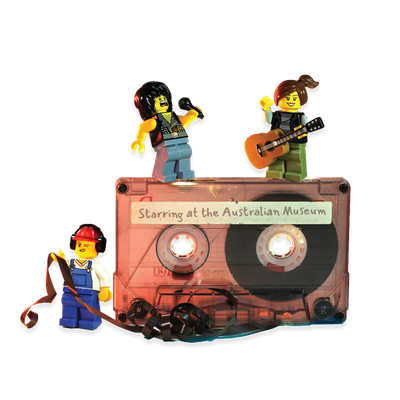Your search returned 43 results
By Page Type
By Tag
- All
- fish (966)
- blog (698)
- fishes of sydney harbour (400)
- First Nations (293)
- Blog (236)
- AMRI (169)
- archives (165)
- Aboriginal and Torres Strait Islander (135)
- Eureka Prizes (131)
- insect (126)
- Ichthyology (125)
- geoscience (109)
- minerals (102)
- climate change (98)
- podcast (94)
- Fish (91)
- Anthropology (89)
- International collections (80)
- Minerals Gallery (78)
- wildlife of sydney (78)
- Labridae (77)
- frog (73)
- gemstone (70)
- history (63)
- photography (63)
- staff (61)
- Mollusca (60)
- gem (59)
- Birds (58)
- education (57)
- Gems (56)
- Indonesia (56)
- AMplify (54)
- shark (54)
- people (53)
- exhibition (51)
- earth sciences (50)
- past exhibitions (50)
- Gobiidae (48)
- Pomacentridae (45)
- sustainability (45)
- Serranidae (44)
- science (43)
- lifelong learning (42)
- Earth and Environmental Science (41)
- Syngnathidae (41)
- Ancient Egypt (40)
- Bali (40)
- bird (40)
- dangerous australians (40)
-
The Days of the Dead - Mexico
https://australian.museum/about/history/exhibitions/death-the-last-taboo/the-days-of-the-dead-mexico/Mexicans celebrate Los Dias de los Muertos (the Days of the Dead), on All Saints' Day, 1 November, and All Souls' Day, 2 November, each year. On these days, the souls of the dead, following the fragrant trail of the cempasúchil (marigold) petals, return to earth to spend time with their relatives.
-
The AIDS quilt
https://australian.museum/about/history/exhibitions/death-the-last-taboo/the-aids-quilt/The Australian AIDS Memorial Quilt was launched in 1988 with 35 panels. There are now 122 quilt blocks, each with around 8 panels, commemorating approximately 2,700 Australians who have died of AIDS-related illnesses.
-
Mourning - Indigenous Australia
https://australian.museum/about/history/exhibitions/death-the-last-taboo/mourning-indigenous-australia/As a sign of mourning, white 'mourning caps' were worn by some Indigenous Australian communities, although the type of cap worn varied from region to region.
-
Mourning - Society Islands, Heva ceremony
https://australian.museum/about/history/exhibitions/death-the-last-taboo/mourning-society-islands-heva-ceremony/In the Society Islands, French Polynesia, the death of a chief or person of distinction was accompanied by the performance of a ceremony called a heva, which was paid for and organised by the family of the deceased.
-
Mourning - Victorian Era
https://australian.museum/about/history/exhibitions/death-the-last-taboo/mourning-victorian-era/In Great Britain, during the reign of Queen Victoria, people usually died in their homes, surrounded by family and friends, and the corpse stayed in the home until burial.
-
Mourning - an introduction
https://australian.museum/about/history/exhibitions/death-the-last-taboo/mourning-an-introduction/Cultures mourn and celebrate death in different ways. Explore this diversity and the ways people remember their dead. Read about the way people prefer to dispose of their bodies and to be remembered.
-
Stethoscopes
https://australian.museum/about/history/exhibitions/death-the-last-taboo/stethoscopes/The first stethoscope was invented in 1819 by Rene Laennec, and enabled doctors to more confidently detect a heartbeat and identify the 'signs of death'.
-
Safety coffins
https://australian.museum/about/history/exhibitions/death-the-last-taboo/safety-coffins/Fear of premature burial was widespread in 18th and 19th century Europe, leading to the invention of the safety coffin. Over thirty different designs were patented in Germany in the second half of the 19th century.
-
Signs of death
https://australian.museum/about/history/exhibitions/death-the-last-taboo/signs-of-death/Among classical Greek and Roman societies the signs of death were the absence of a heartbeat and breathing, and the onset of putrefaction. In medieval times a candle was held to the mouth - a flicker of the candle was shown as a sign of life.
-
Stages of decomposition
https://australian.museum/learn/science/stages-of-decomposition/Decomposition of a corpse is a continual process that can take from weeks to years, depending on the environment. Warning: This webpage shows images of a dead pig decomposing.
-
Find out more
Tails from the Coasts
Special exhibition
On now![]()
-
Find out more
Burra
Permanent kids learning space
10am - 4.30pm![]()
-
Discover more
RELICS
Special Exhibition
Opens 16 August 2025![]()
-
Discover more
Minerals
Permanent exhibition
Open daily![]()





